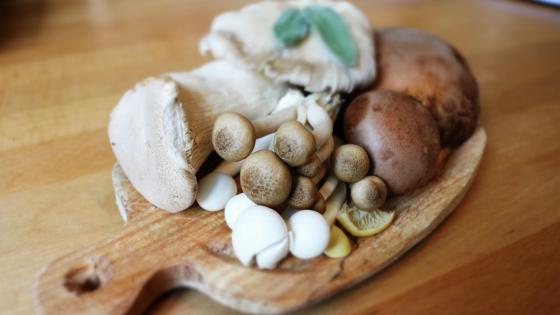
Mushrooms
Mushrooms
Shiitake (Lentinula edodes) and oyster (Pleurotus spp.) mushrooms are specialty mushrooms that are well-suited for small-scale production in Kentucky. Unlike Agaricus types (common button mushrooms, portabellas, and criminis) which require large, highly mechanized facilities with environmental controls, shiitake, and oyster mushrooms can be log-cultivated outdoors. While growers with access to a woodlot will have a clear advantage in terms of production site and log supply, these mushrooms can also be cultivated in other heavily shaded locations as well as indoors.
Key Requirements
| Land | Low to Medium |
| Labor | Medium to High |
| Capital | Low |
Take the HortBizQuiz to see how much Land, Labor, and Capital you have for your operation.
Markets
- Direct to Consumer
- Farmer's Market
- On-Farm Stands
- CSA
- Restaurants
Pests & Disease
Potential contaminant threats include Trichoderma, Biscogniauxia and Trametes versicolor. These fungi can invade the logs, resulting in wood decay, although Trametes versicolor isn’t much of a competitor unless the logs dry out or are exposed to direct sunlight. Direct damage to the mushroom caps can occur as a result of feeding by slugs, snails, birds, squirrels, and deer.
Costs and returns are presented as estimates. They will vary based on your farm and markets.
Costs and returns are presented as estimates. They will vary based on your farm and markets.
Challenges
Can take up to five years of production before producers see returns to cover costs.
Opportunities
- Growers producing sawdust-grown mushrooms under controlled environmental conditions can provide a year-round supply, giving them a marketing advantage.
- Shiitake mushrooms can be grown on artificial logs or blocks under controlled environment conditions.